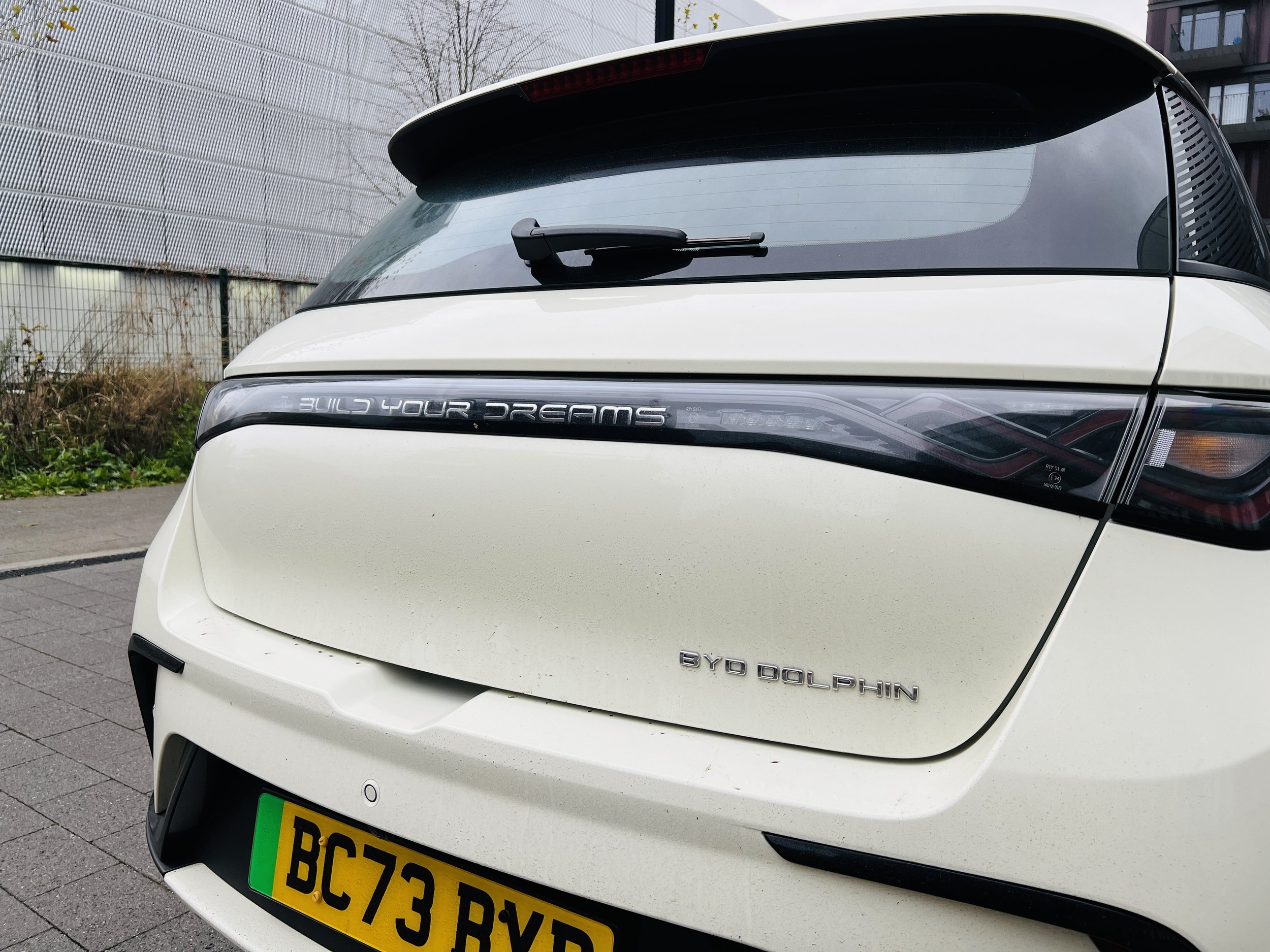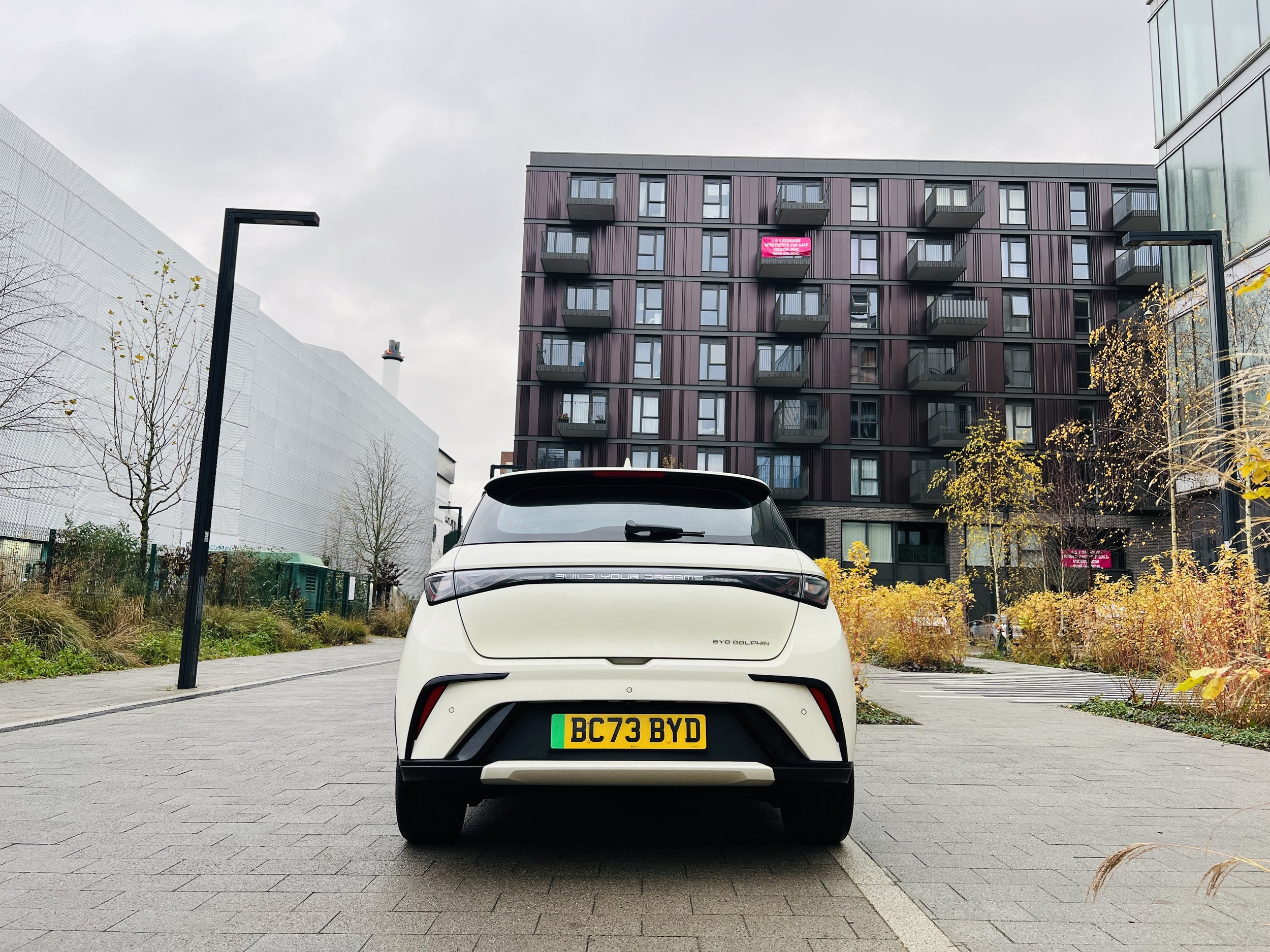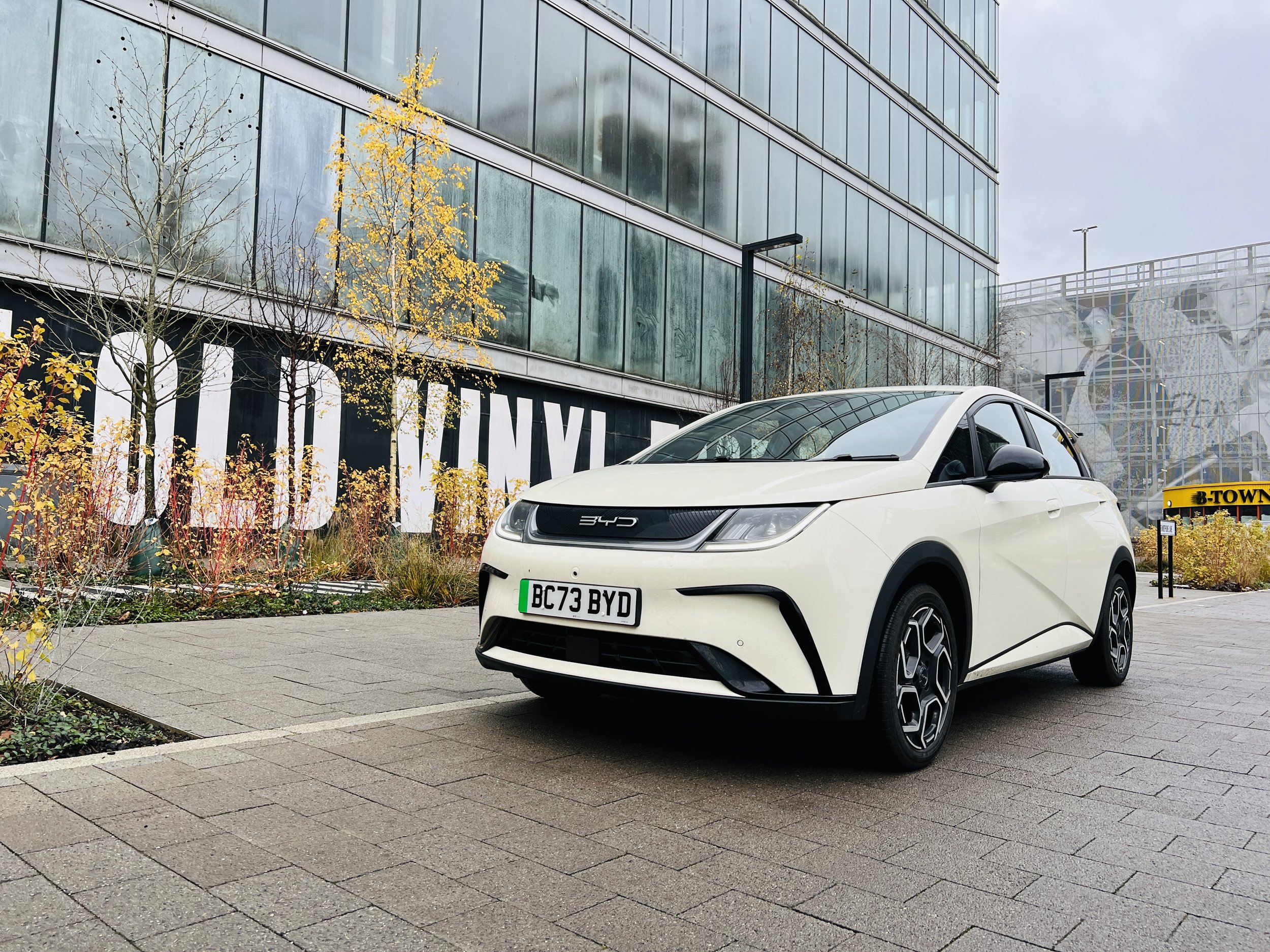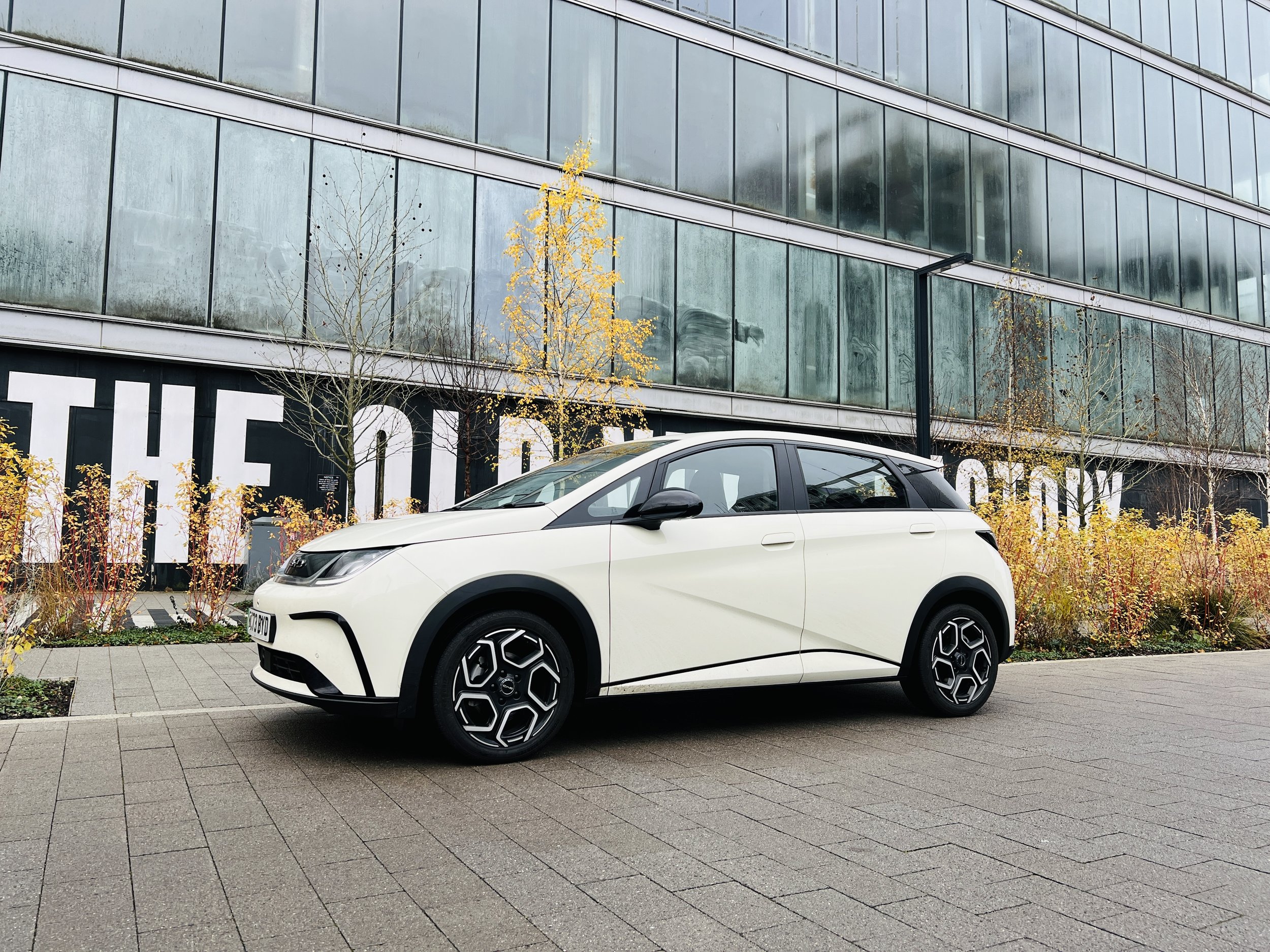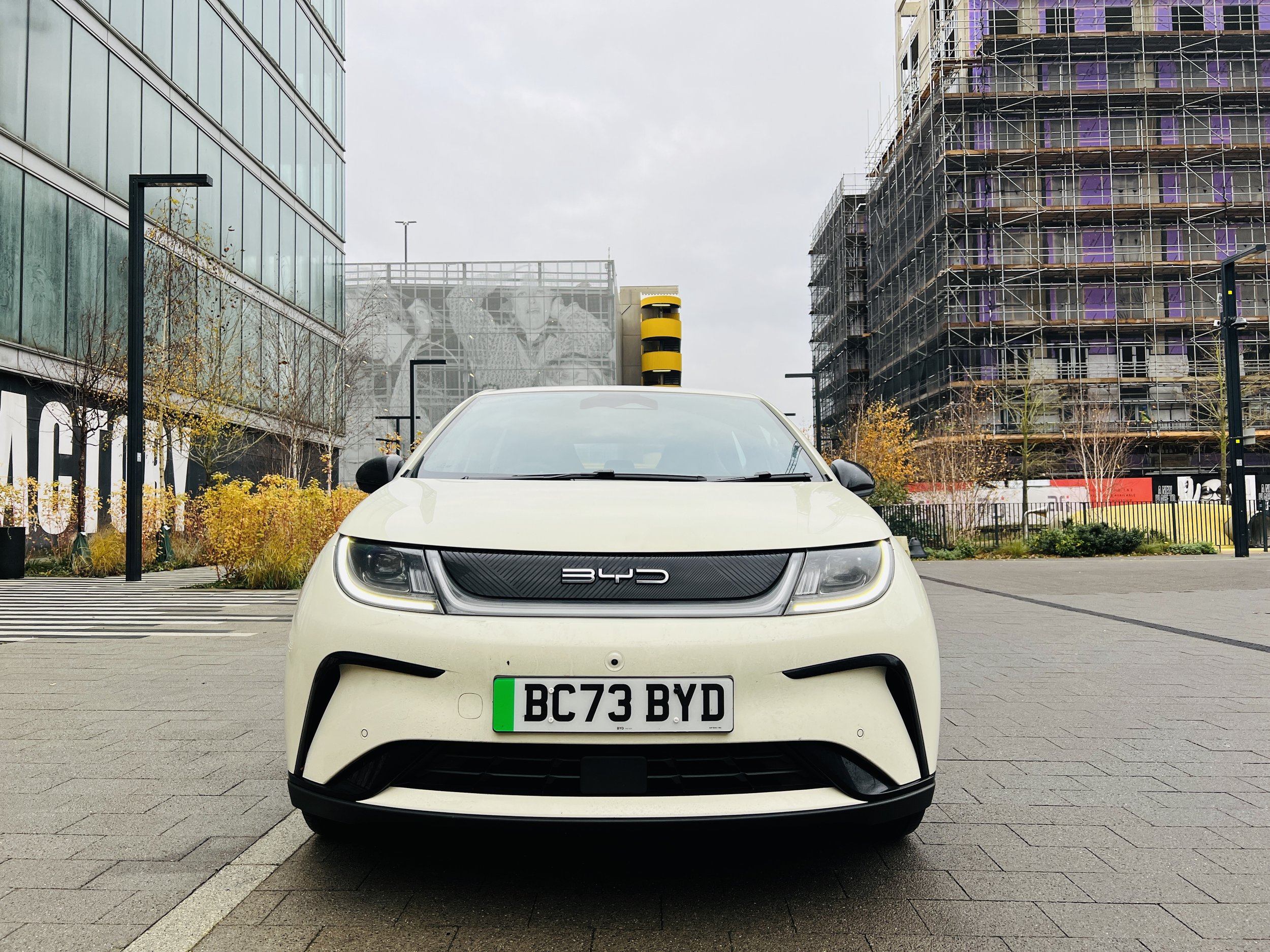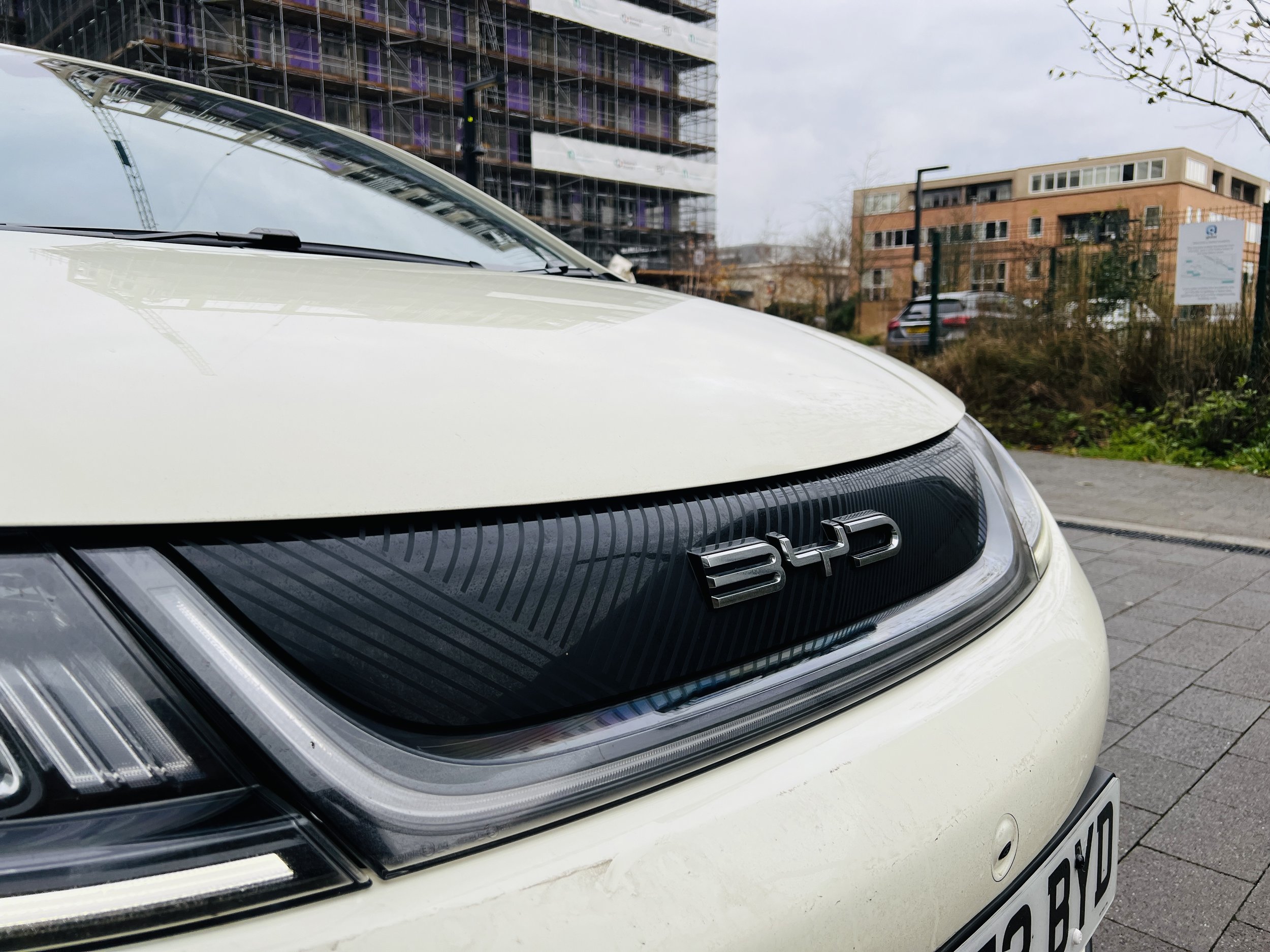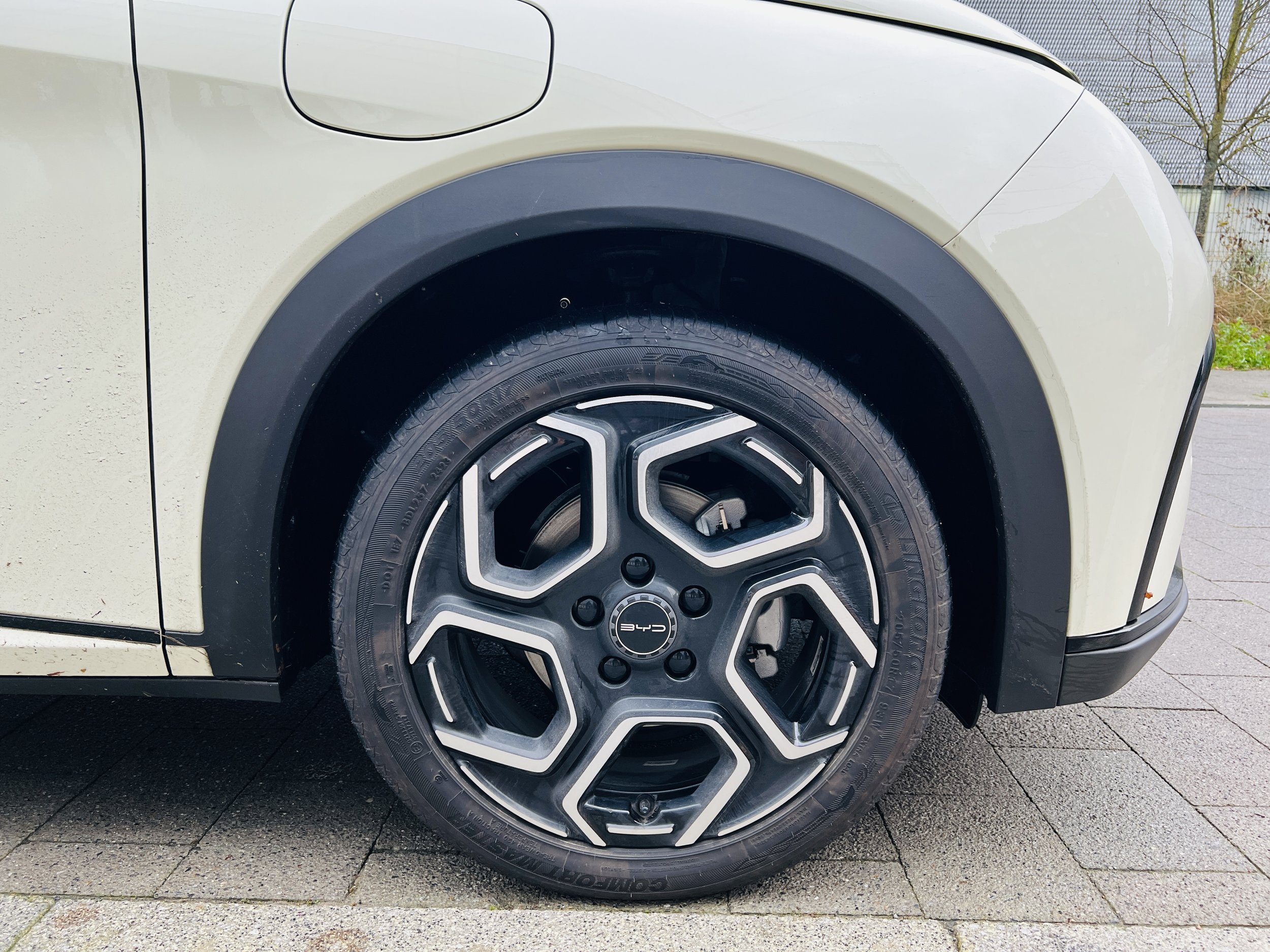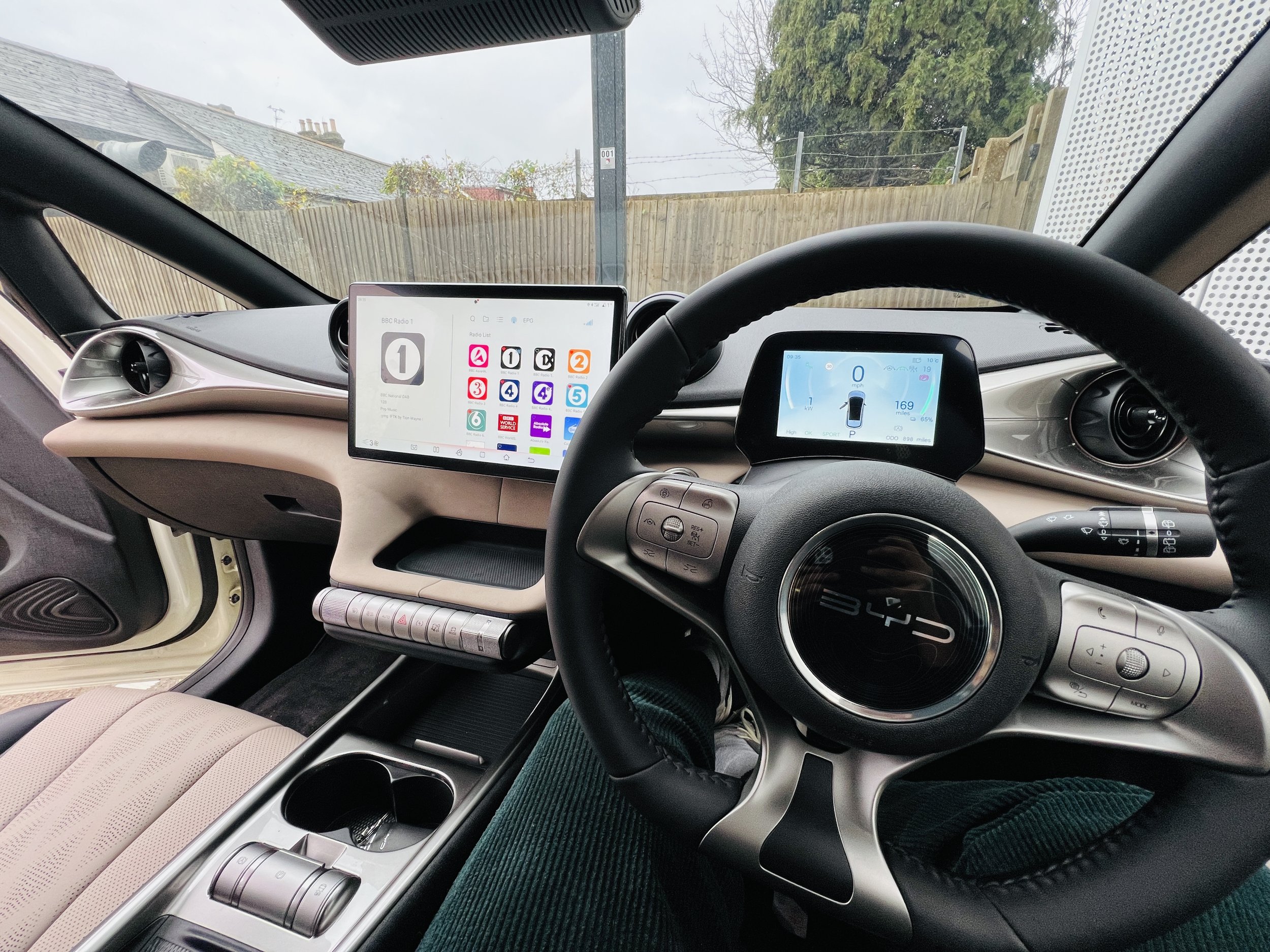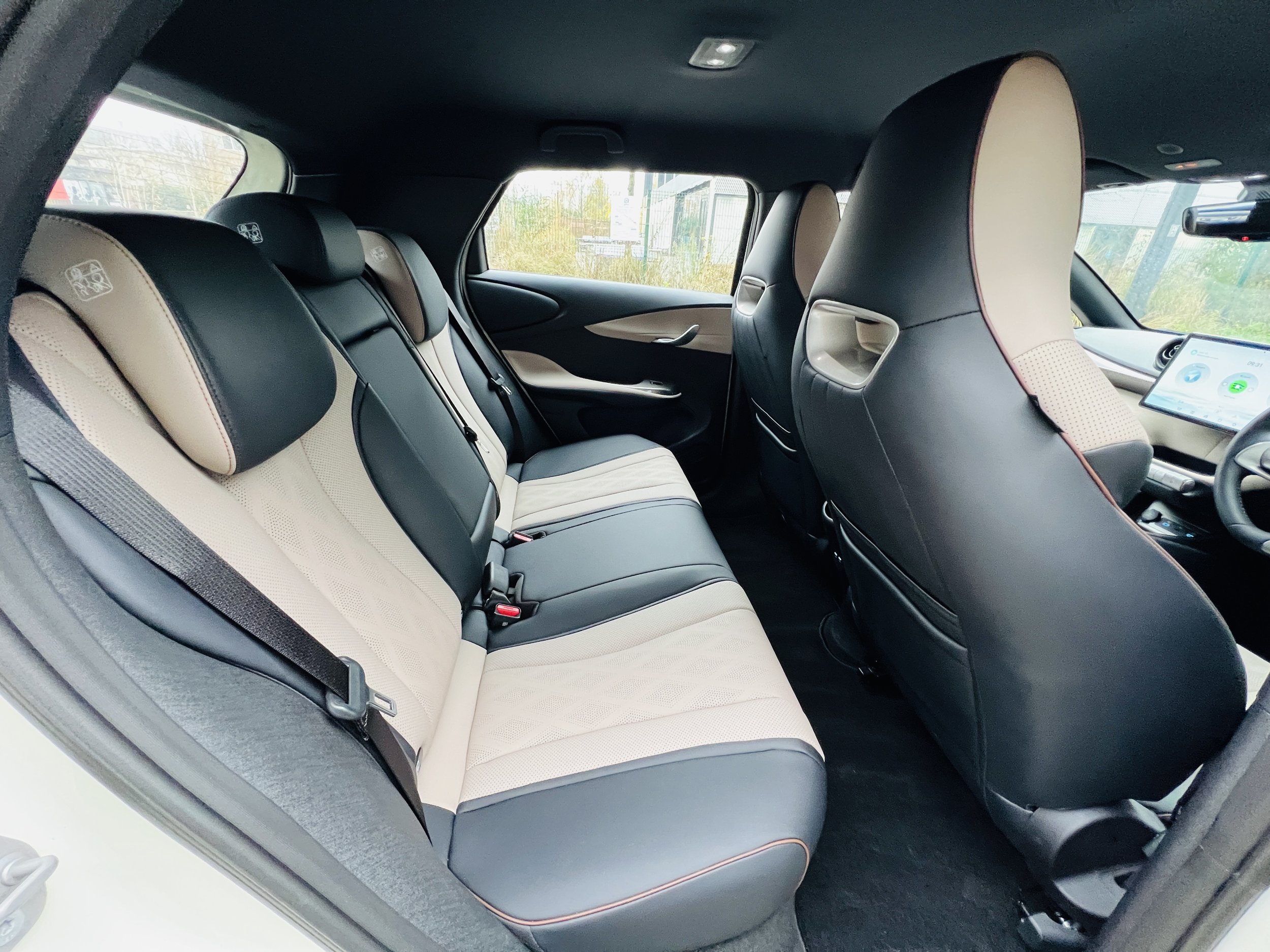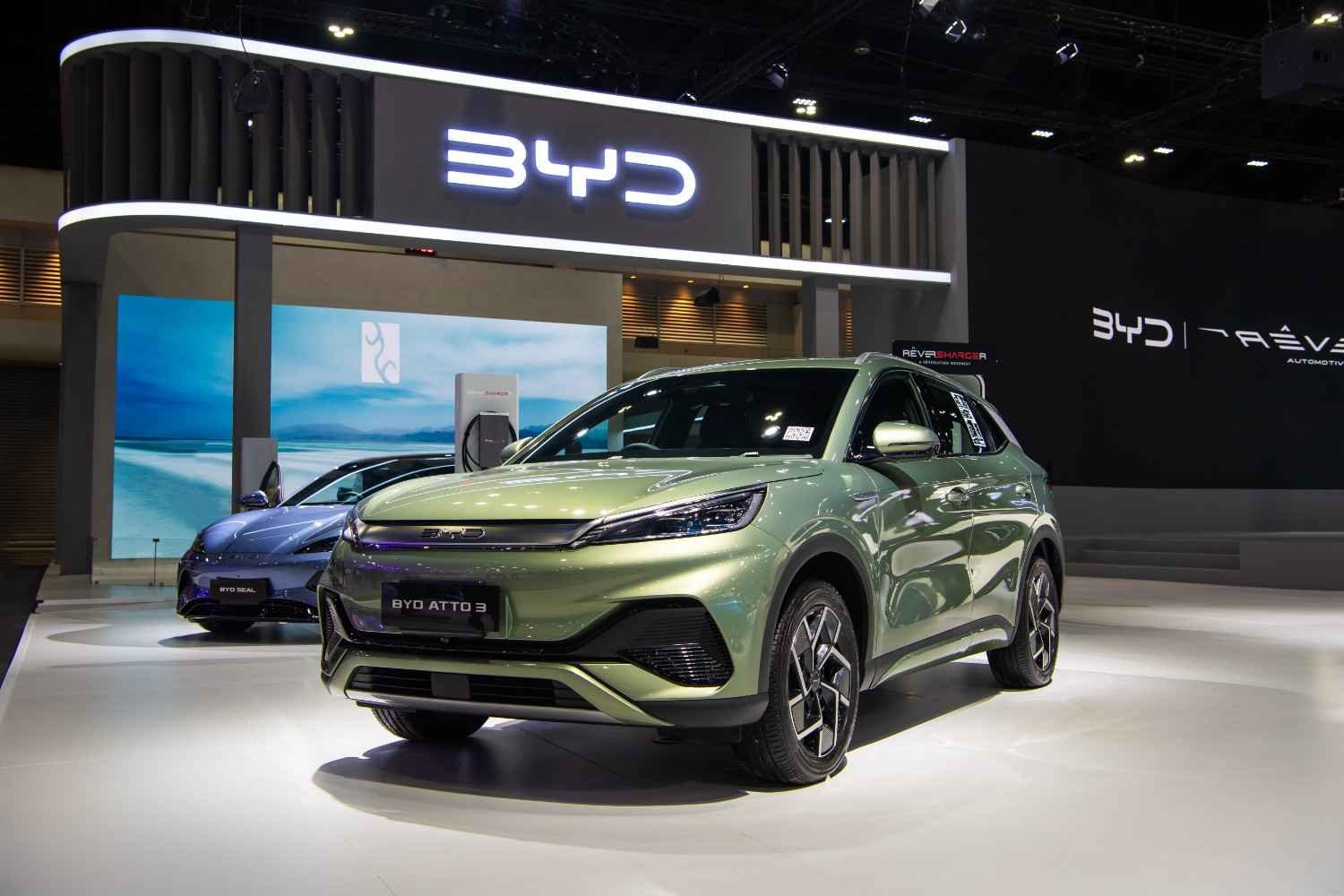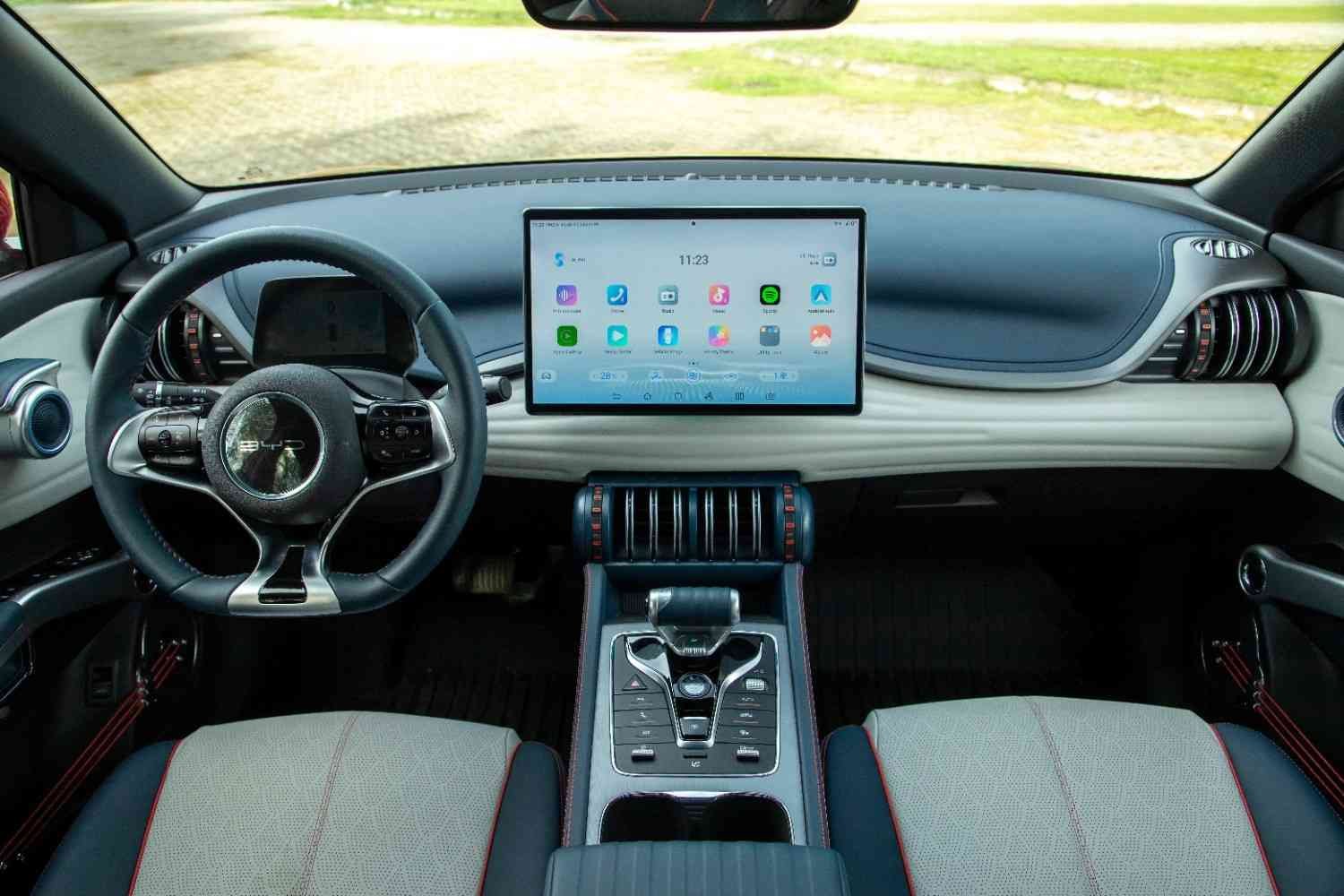BYD Dolphin Salary Sacrifice
Key Insights:
The BYD Dolphin offers exceptional value with a starting price just above £30,000 for the Comfort model (265-mile range), while even the entry-level Active model (£26,000) includes premium features like vegan leather seats, a 12.8-inch rotating touchscreen, and a 360-degree camera.
Different battery options provide flexibility: the smaller 44.9kWh battery delivers 211 miles of range (most efficient at 4.7 miles per kWh), while the larger 60.4kWh battery in higher trims offers 265 miles with standard heat pump technology to maintain range in cold weather.
Through salary sacrifice schemes like The Electric Car Scheme, drivers can lease a BYD Dolphin for around £272 per month - comparable to competitors like the Kia E-Niro (£271) and CUPRA Born (£269), but with unique features including the rotating infotainment screen and impressive standard equipment.
BYD, short for Build Your Dreams, is a publicly listed Chinese company based in Shenzhen, Guangdong, China. Established in 1995, they made a big impact in the UK in 2023 by introducing their electric car range, which now comprises of the Dolphin, Atto, and Seal models.
In this post, we've gathered all the essential information about the three BYD models, featuring a review from our Marketing Director specifically focusing on the BYD Dolphin. We cover everything, ranging from interior and infotainment to space and safety.
The Electric Car Scheme’s BYD Dolphin Review
Marketing Director at The Electric Car Scheme, Gaurav, recently had the opportunity to test drive a BYD Dolphin and here’s how he found the experience.
The BYD Dolphin offers a surprisingly affordable starting price for its size, particularly with the Comfort model priced just above £30,000, providing a 265-mile range battery - the one I opted for.
Despite the low starting cost, the Dolphin is well-equipped. Even the entry-level Active model, priced at a little over £26,000, comes with high-end features such as electrically adjustable vegan leather seats, a 12.8-inch rotating touchscreen, a 360-degree camera, and 16-inch alloy wheels. The standard equipment also includes metallic paint, keyless entry, adaptive cruise control, and various safety features, making it a comprehensive package for the price. However, the Active model only has a 95 hp motor and a smaller 44.9kWh battery.
Moving up to the Boost model for an additional £1,000 upgrades the alloy wheels to 17 inches, adds multi-link rear suspension, and swaps the 95 hp motor for a more powerful 176 hp version, though the smaller battery remains.
The Comfort model, at a larger step-up cost of £3,000, includes a 60.4kWh battery and a more powerful 204hp motor. This upgrade also brings front parking sensors, heated front seats, and an enhanced audio system.
The top-tier Design model, for an extra £1,500, adds a panoramic glass roof, wireless phone charging, rear privacy glass, unique tri-colour alloy wheels, and two-tone paintwork with a differently coloured roof.
Notably, auto wipers are not available on any Dolphin model.
First Impressions Of The BYD Dolphin
At first glance, the Dolphin appears quite plain and ordinary. When parked in a busy car park, it doesn't really catch your eye or have that "wow" factor that other electric cars, like the Volkswagen ID.3 or Hyundai IONIQ 5, might have.
However, when you press the unlock button on the car key, it transforms into something different. Long LED light strips on the front and rear illuminate, and strategically placed LEDs light up the ground below the doors, making it easier to handle your charging cable in the dark. It's a nice touch and adds a cool factor when you approach the car.
What’s The BYD Dolphin Like To Drive?
I live approximately 80 miles from our offices in West London, Hayes, situated in the Warwickshire town of Leamington Spa. My commute from work to home involves navigating through London city streets, cruising on the motorway, and finally a brief stretch of country lane driving. Here's how it went.
Driving The BYD Dolphin On Country Lanes
To ensure your BYD Dolphin handles well on your favourite winding B-road, it's crucial to explore the touch screen menus and switch the steering to its sportier setting. This is a separate function from the general Sport setting and adjusts the steering weight. It transforms the light-and-easy town feel to a more solid weight, boosting confidence when taking bends.
However, keep in mind that it can't improve tyre grip, so exercise caution on wet roads, especially during acceleration. Overall, it provides a sensible level of fun, not reaching the excitement of a hot hatch. The car effectively controls body roll, ensuring passengers don't feel tossed around.
One notable aspect is the sensitivity of the lane-departure assist feature. While driving down a narrow country lane, it's normal to be close to the road lines. However, the Dolphin tends to continuously brake and beep in response, which can be quite distracting.
On The Motorway In The BYD Dolphin
On the motorway, the Dolphin feels mature and sensible. There's a bit of road noise, but wind noise is minimal as it smoothly cruises at higher speeds. Thanks to the more powerful 204hp motor, you can swiftly reach speed on slip roads or when exiting roundabouts.
The safety features contribute to a secure and less tiring experience on long journeys. However, I did experience moments where the BYD Dolphin seemed to drift out of the lane, causing a slight scare. Along with adaptive cruise control and lane-keeping assist, you'll also benefit from driver fatigue and traffic sign recognition systems.
BYD Dolphin Excels In City Driving
The electric motor's strong and immediate performance makes city driving in the Dolphin a breeze. The car's compact size and light steering contribute to easy manoeuvring around town. However, there are visibility issues, with thick front and rear door pillars affecting the view at roundabouts and over-the-shoulder rear visibility.
Regrettably, the regenerative braking, even at its higher setting, is mild. Unlike some cars that can come to a stop without using the brakes, the Dolphin doesn't offer one-pedal driving.
Despite a slightly firm ride that makes road imperfections noticeable, the Dolphin handles well on urban obstacles like speed bumps. All models come equipped with rear parking sensors and a 360-degree camera, a notable feature even in the entry-level car. The top two trim levels also include front sensors. Additional useful features in town include a warning for opening the door into the path of another road user, and the top two trims feature folding heated door mirrors.
What’s The BYD Dolphin Like On Space And Practicality?
Step inside a BYD Dolphin, and you'll find an appealing cabin with abundant cubby holes and storage. Rear passengers enjoy impressive space, though the boot lacks clever design, and there's no storage under the bonnet.
The driving position is easily customisable with standard electric seats throughout the lineup. A notable feature is the small dashboard display that moves with the steering wheel (similar to the Volkswagen ID.3), ensuring visibility through the spokes. The rotating gear selector is neatly tucked away at the end of a short bar of buttons.
Various storage options include plenty of places for wallets or keys, a large open area beneath the armrest, and a spacious glovebox. While the average-sized door bins lack lining, the reassuring thump when closing the doors signals a quality build.
There are two cup holders capable of accommodating decent-sized bottles or coffee.
What’s The BYD Dolphin Like In The Back?
Choosing the Dolphin for your car means happy backseat passengers, even for tall individuals who can sit one behind the other despite the front seats being chunky. Squeezing feet under the front seats is possible, aiding in finding a comfortable position, and the flat floor adds to the overall comfort.
While headroom is satisfactory, the large door pillar can make it a bit dark in the back, especially for cars without a panoramic glass roof. The rear windows are not very large, further limiting natural light.
The middle seat is narrower, and best suited for smaller individuals. Accommodating three adults is a stretch unless they're very close friends. Accessible ISOFIX points include two in the back and one in the front seat.
Rear door bins, though not lined, offer reasonable size. Rear passengers benefit from a pair of USB sockets and a solitary cupholder in the middle, with two more appearing when you drop the centre armrest.
BYD Dolphin Boot Space
The Dolphin offers a boot space of 345 litres, aligning with other electric hatchbacks. When you fold the rear seats, it expands to 1,310 litres. To put it in perspective, the MG 4 has 289 litres, the Smart #1 boasts 323 litres, and Peugeot's e-208 has 311 litres. The Renault ZOE falls a bit short at 338 litres, while the pricier Volkswagen ID3 and Cupra Born each provides a luggage area of 385 litres.
BYD interior, infotainment and features
The clever rotating screen is a standout feature in the cabin, adding a touch of novelty to its smart and stylish appearance. However, the infotainment system could benefit from having some shortcut buttons, as too much functionality relies on interactions with the screen.
Initially, the cabin impresses with its great aesthetics, incorporating various materials for an interior that is anything but ordinary. Upon closer inspection, though, it becomes apparent that some of the materials may not be as soft to the touch as they appear. While still pleasant, the interior seems to align more with its pricing rather than attempting to pass as a premium car.
Up front, there are a pair of USBs, a 12V socket, and a wireless charging pad on top-tier models.
The Dolphin's most noteworthy feature is its rotating screen. The 12.8-inch infotainment display can smoothly switch from portrait to landscape mode at the press of a button. However, this rotation works only when not using Apple CarPlay or Android Auto, where it remains in landscape mode. While this feature may seem like a fun novelty, it might be considered somewhat impractical, as most users will likely stick to one orientation.
A drawback is the absence of shortcut buttons to facilitate easy navigation between screens. Transitioning from using CarPlay to adjusting the temperature and returning to the previous screen requires nine presses or swipes, which is less convenient compared to the traditional method of pressing a button or turning a knob in the cabin.
Voice control is available for those who prefer it. All you need to do is say ‘Hi Dolphin’, but overall, the system could be more user-friendly with the inclusion of a few additional buttons.
BYD Dolphin battery range and charging speeds
Having three different battery and motor options across four models might seem a bit overwhelming, but there's a logical progression among them.
The entry-level car, known as the Active spec, is the most efficient. It boasts a 211-mile range from a 44.9kWh battery, translating to 4.7 miles per kWh, powered by a 95 hp motor.
Moving up to the Boost spec, you get the same battery size but with a more potent 176 hp motor. However, the increase in power doesn't do any favours for efficiency, resulting in a 193-mile range at an official rate of 4.3 miles per kWh.
The top two specifications, Comfort and Design, share a larger 60.4kWh battery and the same motor. Both offer an official 265-mile range, averaging 4.4 miles per kWh.
Charging speeds vary between the two battery sizes. At home, the larger battery can charge at up to 11kW, compared to 7kW for the smaller one. At public charging points, the larger battery can handle up to 88kW, though it's not exceptionally fast. The smaller battery's charging rate has not been confirmed by BYD yet. Interestingly, cars with larger batteries take 40 minutes to charge from 10-80%, while the smaller ones are just two minutes quicker despite requiring less electricity.
It's worth noting that BYD includes a heat pump as a standard feature in all cars. This pump helps maintain the vehicle's range in colder temperatures, addressing a common issue for electric vehicles during winter.
What’s The Price Difference Between The BYD Dolphin And Other Electric Cars?
If you're thinking about leasing a new BYD Dolphin through The Electric Car Scheme, we've put together a brief comparison with other electric cars in the same price range. Don’t forget, you can also use our online salary sacrifice calculator on our website to check the prices of any electric car in the market.
| Car Make & Model | BYD Dolphin | MG ZS Electric | CUPRA Born | Kia E-Niro |
|---|---|---|---|---|
| Monthly Price | £272 | £241 | £269 | £271 |
| Battery Size | 60.4kWh | 73kWh | 58kWh | 64kWh |
| WLTP Range | 265 miles | 273 miles | 265 miles | 285 miles |
| Lease Term | 36 months | 36 months | 36 months | 36 months |
| Miles per year | 10,000 | 10,000 | 10,000 | 10,000 |
| All-inclusive package | YES | YES | YES | YES |
As for the BYD Dolphin, I suggest taking it for a test drive and visiting your nearby BYD showroom. The team at BYD South West will be delighted to assist you. Also, explore the alternative options listed above, as they might better suit your driving preferences and requirements.
The BYD Atto 3
The BYD Atto 3 is a family-oriented electric SUV from China, competing in the market alongside models like the Peugeot e-2008, MG ZS EV, or Kia Niro EV. While the exterior design may not stand out significantly, the Atto 3 aims to capture attention with its unique interior and electric performance.
Externally, the Atto 3 maintains an unassuming presence, with 'Build Your Dreams' badging being a notable feature. However, the interior tells a different story, boasting muscle membrane-like trim inserts, eye-catching vegan leather colour combinations, and functional guitar strings across the door bins, providing the Atto 3 with a distinctive character.
| Measurement | Result | |
|---|---|---|
| Range | 261 miles | |
| Efficiency | 4.0 miles per kWh | |
| Battery size | 60kWh | |
| Max charge speed | 150kW | |
| Charge time (AC) | 9hrs 42mins (0-100%, 7kW) | |
| Charge time (DC) | 44mins (10-80%, 150kW) | |
| Charge port location | Right Front | |
| Power outputs | 204hp |
All variants of the BYD Atto 3 are equipped with a single electric motor powered by a 60.5kWh battery. The model offers two options: Atto 3 Comfort and Atto 3 Design, each available in five distinct colours – surfing blue, parkour red, climbing grey, skiing white, and exploring green. The range-topping Design model features a large 15.6-inch infotainment display as well as an air purification system.
Build quality impresses, with an upper cabin featuring soft-touch surfaces and vegan leather, although lower areas exhibit harder plastics. A 12.8-inch infotainment system comes standard, while top-spec Design models feature a 15.6-inch screen with a unique rotating capability, allowing a switch between landscape and portrait orientations.
What’s The BYD Atto 3 Like To Drive?
Overall, the Atto 3 is comfortable to drive but a relatively noisy EV on the motorway. It is also very quick and will beat its claimed 7.3 seconds 0-60mph time.
In general, driving the Atto 3 is comfortable, but it tends to be a bit noisy when cruising on the motorway. The soft suspension makes it smooth over bumps in town, and the low dashboard enhances forward visibility. However, the smaller rear window affects the rear view. Although there's a clear reversing camera without a washer system, it offers a helpful 3D all-around view. The light steering and a 10.7-meter turning circle make manoeuvring through tight roundabouts and U-turns effortless.
On the motorway, the 201hp electric motor allows quick acceleration from 40mph to 70mph, but wind noise becomes noticeable at speeds exceeding 60mph. While driving on country lanes, the light steering proves beneficial, ensuring good corner handling, but there seems to be considerable movement when navigating twists and turns.
Space And Practicality
The Atto 3 offers practicality with a slightly smaller boot than some EV SUVs and limited rear headroom. The front cabin is practical, featuring a spacious storage box, adjustable cup holders, and a storage area with a wireless phone charger. Door pockets with guitar-string-like elastic strings add a unique touch. Front seats are comfortable but lack lumbar support adjustment.
In the back, there's mixed space with ample legroom but tight headroom, especially with the standard panoramic glass roof. The big seat back pockets are subdivided into tablets, magazines, phones, or sunglasses. ISOFIX anchor points are easily accessible, and there are USB sockets. The guitar-string door bins make a reappearance in the back.
The 440-litre boot is smaller than some rivals, like the MG ZS and Kia e-Niro, but it has a square and flat load space with no lip. The rear seats fold flat, lacking handles in the boot, and the low-set boot release button can get dirty. However, a false floor provides storage for charging cables, and there's room to stow the rigid luggage cover. Surprisingly, there's no front boot (froot?), despite a recessed space above the front-mounted electric motor.
Interior and Infotainment
The exterior of the BYD Atto 3 appears plain and generic, but the interior is a different story, characterized by an ambitious design. Interestingly, it aims to emulate a gym. The gear selector even resembles the throttle lever of an Airbus or the Millennium Falcon, adding a unique touch.
The standout feature is the large touchscreen at the center of the dashboard. Basic models sport a 12.0-inch screen, while top-spec versions boast a massive 15.6-inch one. The screen is responsive, featuring an Apple-style menu, and supports Apple CarPlay, with Android Auto expected in a future over-the-air software update.
The cabin's upper parts showcase excellent material quality, with soft-touch surfaces and plush 'pleather' vegan leather. However, lower sections feature hard and rough-edged plastics, posing a potential injury risk. Despite some quirks, Atto's cabin outshines equivalents from VW or MG. Noteworthy oddities include large rocker switches for interior door handles, speakers with pulsating LED lights, and an optional karaoke system integrated into the screen.
Front seats offer high comfort, featuring imitation leather with a soft feel. Some may find them a bit too soft during extended journeys, suggesting improved firm support for longer drives.
A Guide To The BYD Seal
The BYD Seal is the third car launched by the Chinese brand in 2023. Among the trio, including the BYD Atto 3 and BYD Dolphin, the Seal stands out as the top-tier model. While the Atto 3 and Dolphin target lower segments with a front-wheel-drive crossover and a hatchback, the Seal offers rear and all-wheel-drive options, boasting ranges of 354 and 323 miles, respectively, and an impressive 530hp performance.
Design And Interior Features
Visually, the BYD Seal appears as a worthy competitor to the Tesla Model 3. Behind the wheel, it competes with established electric models like BMW, Hyundai, Polestar, and Tesla saloons. The interior boasts a thoughtful mix of materials, with suede on the door panels. A notable feature is the expansive touchscreen, adjustable between landscape and portrait layouts at the touch of a button. However, some find its on-the-move usability challenging due to an abundance of functions and a lack of physical buttons.
With an RRP range of £45,695 to £48,695, the BYD Seal offers two variants: the Design RWD and Excellence AWD. The distinction lies in power and driven wheels rather than additional equipment, with a £3,000 price difference between them.
Performance And Charging
The Rear-wheel drive Design model, priced lower, provides 313hp and a 354-mile range. In contrast, the Excellence AWD sacrifices some range (323 miles) for a boosted 530hp performance. The Excellence also includes a head-up display and an advanced suspension system, primarily enhancing performance. Comparatively, the BYD Seal proves more cost-effective than Tesla's most powerful versions. The charging time is quoted at 26 minutes for a 20-60% charge at up to 150kW.
What’s The BYD Seal Like To Drive?
The BYD Seal impresses with its comfort and handling, effectively navigating bumps and road imperfections. While driving around town or on the motorway, it offers a smooth and enjoyable experience. However, the touchscreen-centric interface may pose challenges, requiring multiple steps for simple adjustments. On the motorway, the Seal exhibits commendable performance, with safety and assistance systems ensuring a secure journey. Its range comfortably accommodates breaks on longer journeys, addressing range anxiety concerns.
Surprisingly agile on tight roads, the BYD Seal maintains nimbleness despite its two-tonne weight. However, accessing certain driving modes through touchscreen menus might be a slight inconvenience.
Space And Practicality
The cabin impresses with its quality and design, featuring a pleasing mix of materials. In the front, there's ample space for essentials, accompanied by USB and USB-C ports, cupholders, and a roomy glove box. Moving to the rear, the BYD Seal offers good legroom, although taller individuals may find the sweeping roofline slightly restricting. The panoramic glass roof adds a touch of luxury, although the back seats' low position might not suit everyone.
What’s The Boot Space Like?
The Seal boasts a 400-litre boot space, ideal for weekend getaways, surpassing some competitors but trailing behind others. Additionally, a 53-litre front load area provides convenient storage for charging cables. The interior's centrepiece is a 15.6-inch touchscreen that rotates for enhanced visibility. However, navigating through menus might be cumbersome, requiring several button presses for simple adjustments.
The BYD Seal positions itself as a compelling electric vehicle option, combining performance, range, and a tastefully designed interior. Despite some usability concerns with the touchscreen interface, its competitive pricing and overall driving experience make it a noteworthy contender in the electric car market.
Watch Our Review Of The BYD Seal
The BYD Dolphin and Atto 3 are available to salary sacrifice via The Electric Car Scheme. The prices mentioned above come from The Electric Car Scheme quote tool. If you're not part of the scheme but want to enjoy these substantial savings, you can schedule a call with one of our Product Specialists here.
Our pricing is based on data collected from The Electric Car Scheme quote tool. All final pricing is inclusive of VAT. All prices above are based on the following lease terms; 10,000 miles pa, 36 months, and are inclusive of Maintenance and Breakdown Cover. The Electric Car Scheme’s terms and conditions apply. All deals are subject to credit approval and availability. All deals are subject to excess mileage and damage charges. Prices are calculated based on the following tax saving assumptions; England & Wales, 40% tax rate. The above prices were calculated using a flat payment profile. The Electric Car Scheme Limited provides services for the administration of your salary sacrifice employee benefits. The Electric Car Scheme Holdings Limited is a member of the BVRLA (10608), is authorised and regulated by the FCA under FRN 968270, is an Appointed Representative of Marshall Management Services Ltd under FRN 667174, and is a credit broker and not a lender or insurance provider.
Images on this site are sourced from third-party websites as listed below each image and are the property of their respective owners. If you believe any content infringes your copyright, please contact us at marketing@electriccarscheme.com.


